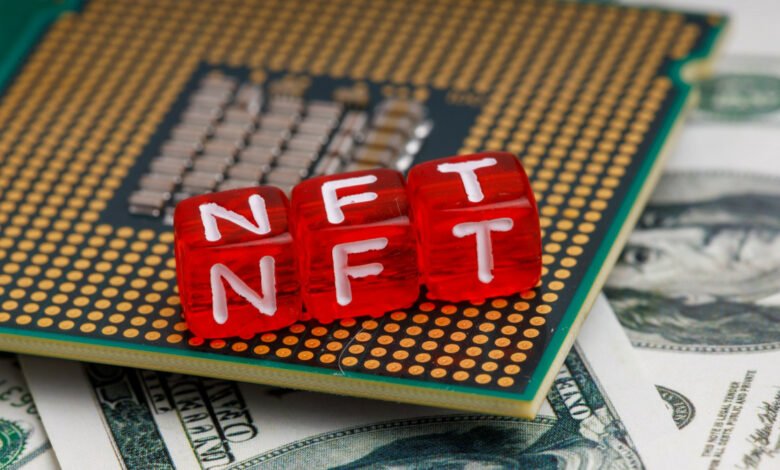In the growth of NFTs, a Progressive Regulatory Framework Is Needed

In the growth of NFTs, a Progressive Regulatory Framework Is Needed
The emergence of NFTs as a distinct entity distinct from cryptocurrencies necessitates establishing a legal framework to prevent forgeries and safeguard intellectual property.
In India, the tale of crypto assets has been inextricably intertwined with disruption. While investors and institutions are becoming more familiar with cryptocurrencies, the rise in popularity of non-fungible tokens (NFTs) is another exciting development in this field. NFTs began as a niche market known exclusively to crypto lovers, but they have already become an internationally trending product. This is supported by worldwide transaction volumes of more than $21 billion.
This is also true in India, where well-known individuals and institutions are launching NFTs, ensuring that they will be noticed by fans, investors, and analysts. NFT markets, which have attracted over 300 artists, NFT-based businesses, and the fame stated above in NFT collections, have brought it closer to public discourse.
The forthcoming Cryptocurrency Bill has also raised concerns about digital asset pricing and investor protection. This year’s Budget includes a statutory tax on gains from digital assets, with indications that NFTs will be included. We will attempt to evaluate the growth of NFTs, their use cases, and regulatory difficulties in this environment, given the imminent relevance of this law.
The Rise of Non-Financial Transactions

Supply and demand are fundamental to business and money, and the growing popularity of NFTs and larger crypto-tech communities have aided in closing existing gaps. NFTs have provided a new avenue for India’s rich cultural and artistic past to attract investors, particularly first-time investors. Furthermore, the cheaper cost of NFTs in India makes it more appealing for international investors to shift their focus to converting locally produced art into digital assets. The smoothness and openness of the smart contracts that control these NFT transactions are further benefits.
Another key factor contributing to the growing popularity of NFTs is the sense of exclusivity and community they provide. Similar to how country club memberships are highly sought after and exclusive commodities, owning specific NFTs aids in the development of a community in the virtual world – a realm in which we are progressively spending more time. Ownership of exclusive NFT grants the investor access to other members of that community and a say in the overall NFT project’s direction. They can serve as both a financial store of value and a representation of the value brought in by the larger community.
Regulatory Concerns

While the rise of digital asset markets has been spectacular, several regulatory challenges must be addressed, including a lack of open rules regulating crypto assets, authenticity and intellectual property, and consumer protection concerns.
First, a lack of rules controlling crypto assets influences both the legality of crypto assets and investor sentiment regarding NFT innovators.
As previously indicated, smart contracts are frequently used to manage NFT transactions. In this perspective, any financial enterprise needing bitcoin may be scrutinized on two fronts: first, the legality of cryptocurrencies as payment instruments, and second, the applicability of foreign exchange rules to cross-border transactions.
It is essential to highlight that smart contracts that enable the sale of NFTs do not always entail a transfer of ownership or copyright, nor permission to use the artwork in terms of authenticity and intellectual property. These issues should preferably be handled transparently in the contract.
Another significant stumbling block is the copycat market for NFTs. NFTs are one-of-a-kind signed tokens that represent a specific artwork interpretation. In the absence of markets adopting digital forensics standards, duplicates may be uniquely coded, supporting copyright infringement and fraudulent transactions.
It’s important to note that smart contracts that allow for the sale of NFTs don’t always imply a transfer of ownership or copyright, nor authorization to exploit the artwork in terms of authenticity or intellectual property. These problems should preferably be addressed directly in the contract. Another stumbling block is the copycat market for NFTs, which are effectively one-of-a-kind signed tokens representing a specific artwork interpretation. Duplicates may also be uniquely coded in the absence of markets adopting digital forensics standards, sustaining copyright infringement and fraudulent transactions.
A Balanced Approach Is Required

Incorporating NFTs within the broader category of crypto assets, or digital assets, in the future Bill will provide the market with more legislative certainty. However, given the industry’s fast expansion, it’s critical not to allow a regulatory void to exist for too long.
Because of the particular character of this market, a balanced approach is required, in which NFT markets may operate effectively while adhering to broad criteria provided by central regulatory agencies. Consumer trust in purchasing and selling NFTs might be enhanced by tradable digital certificates that validate the history of the transaction and the marketplace that facilitated it. When markets achieve a certain level of trading volume, they may begin to categorize NFTs.
While categorizing NFTs into three separate classes is difficult given the various forms and manifestations these assets may take, nations like Luxembourg have started by classifying them as financial instruments, electronic money, and collective investment instruments.
Concerns raised by the government about crypto assets fueling money laundering and criminal funding have spilt over into the debate over NFT regulation. The European Union’s ratification of the Fifth Anti-Money Laundering Directive (5AMLD) might serve as a model for future regulation. While it does not explicitly mention NFTs, it emphasizes the importance of ‘art intermediates’ in money laundering and art funding.
Furthermore, while working toward a fair regulatory framework, concentrating on investor protection and education is critical. NFT systems must first focus on labelling material and alerting consumers of an item’s history — its value, average volatility, artist biography, and a clear definition of the sort of digital information — as a first step. Applying the ASCI principles for cryptocurrency advertising to non-traditional financial institutions (NFTs) will allow investors to make more informed decisions and contribute to a better knowledge of digital assets.
Conclusion
While there has been exponential development and acceptance of NFTs, most of these transactions continue to operate in the grey area. NFTs have the potential to alter the digital art business by making it more affordable and accessible. To make this a reality, rules must find a balance between accountability and growth, providing creators more power but also protecting investors.
edited and proofread by nikita sharma




